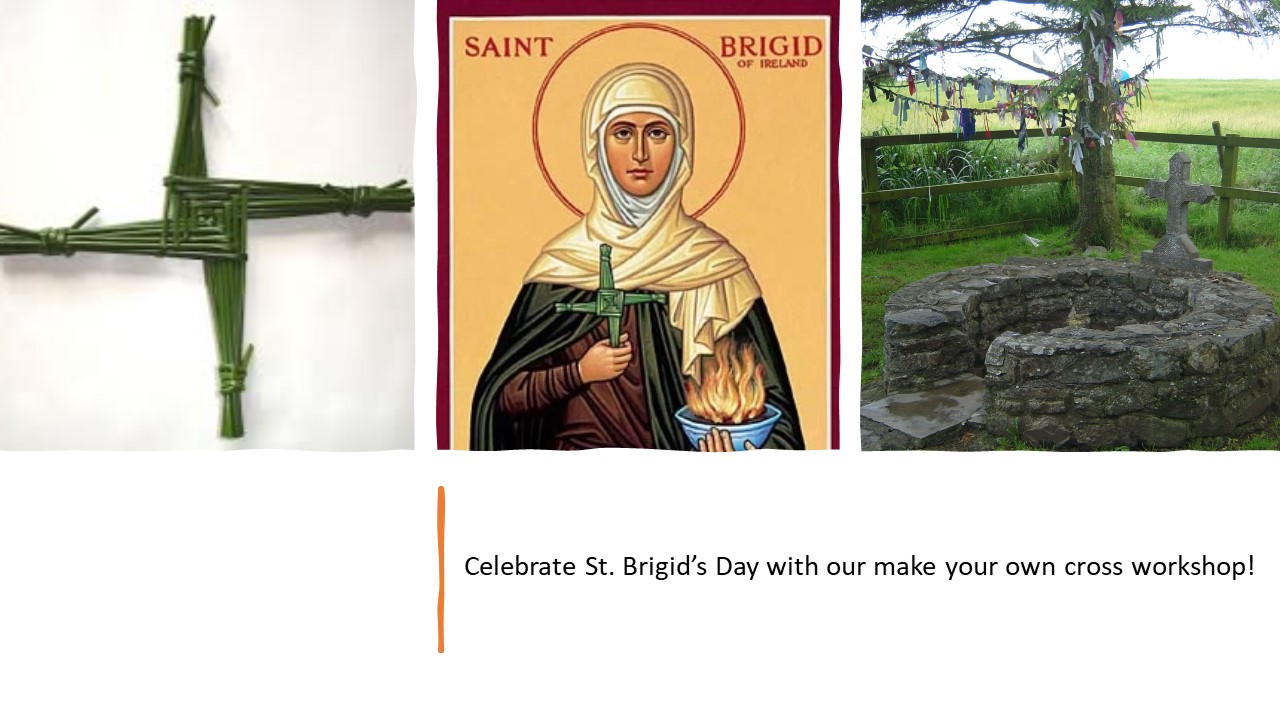The most common custom associated with St. Brigid’s Eve was the making of the Cros Bride or Bogha Bride, which was hung in homes and often in the byre (cowshed) also. Tradition states that crosses were made for protection against fire and lightening, and that illness and epidemic disease could also be held at bay. If the cross hung by the door evil spirits couldn’t enter the home. The little broken bits left over after the cross was made were placed on the floor by the hearth, often covered by a white cloth to form a bed for saint. In other areas, the straw left from ‘Brigid’s bed’ and from the making of the crosses was believed to have healing powers. Strands were preserved and tied around an aching head or limb at night. The following day the wearer would place the strands on the fire, where if they burned quickly there would be a rapid cure. Some put the straw under the pillow to ward off disease and in Donegal fishermen used it for protection.
Julia Richards will be at the museum at 2pm to lead instructions for making your own St. Brigid's Cross. Admission is $10, which includes all necessary materials. Purchase tickets here.
